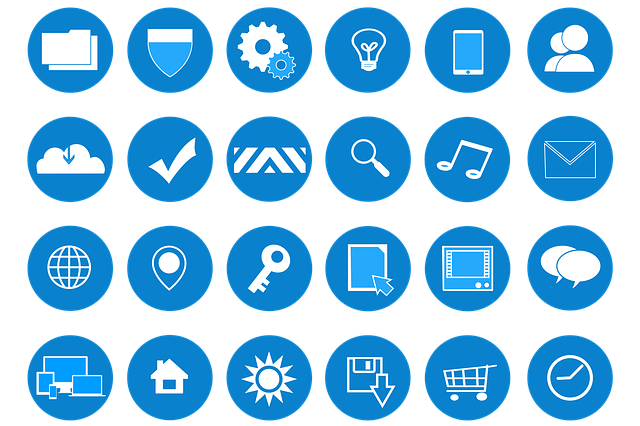Full-service web design offers a comprehensive solution for businesses aiming to create and maintain high-performing websites. This includes strategic planning, UX design, development (front-end and back-end), content creation, SEO optimization, and digital marketing. Agencies specializing in this approach handle each stage internally or through partner networks, ensuring better communication, quality, and faster delivery. The result is dynamic websites tailored to clients' unique needs, outperforming competitors in the bustling digital market. Key aspects include responsive design for all devices, UX-focused design principles, e-commerce functionality integration, and robust SEO strategies.
“Dive into the world of full-service web design and development, where a comprehensive approach transforms digital visions into reality. This article explores the intricate process behind crafting robust online platforms, from initial concept to launch. We unravel the role of full-stack developers, essential components of successful projects, and user experience (UX) strategies for optimal satisfaction. Discover the art of responsive web design, seamless e-commerce integration, and SEO best practices, all tailored to enhance online presence. By understanding these key elements, businesses can harness the power of full-service web design for long-term success.”
Understanding Full-Service Web Design: A Comprehensive Overview

Full-service web design encompasses every aspect of creating and maintaining a website, from initial concept to ongoing support. It includes strategic planning, user experience (UX) design, visual design, front-end development, back-end development, content creation, search engine optimization (SEO), and digital marketing. This comprehensive approach ensures that all elements of the web project are aligned with business goals and deliver an exceptional user experience.
A full-service web design agency typically handles each stage of the process in-house or through a network of specialized partners. This integration allows for better communication, consistency in quality, and faster project delivery. By leveraging their expertise across various disciplines, agencies can create dynamic, high-performing websites tailored to meet specific client needs and outpace competition in today’s digital landscape.
The Role of a Full-Stack Developer in Web Projects

In the realm of full-service web design and development, a full-stack developer plays a pivotal role in bringing digital visions to life. These developers are versatile professionals who possess a deep understanding of both front-end and back-end technologies, enabling them to work on all layers of a website or web application. Full-stack developers serve as the orchestrators of complex web projects, ensuring seamless integration from user interfaces to server infrastructure.
Their expertise encompasses everything from crafting visually appealing and user-friendly interfaces using HTML, CSS, JavaScript, and modern front-end frameworks to building robust back-end systems with languages like Python, Ruby, PHP, or Node.js. Moreover, they often engage in database management, API development, and server configuration, ensuring the web project’s performance, security, and scalability. This comprehensive skill set allows them to efficiently navigate the entire development process, fostering effective communication between design and engineering teams.
Key Components of an Effective Full-Scale Web Development Process

A full-service web design and development process involves several key components that work in harmony to create a successful online platform. Firstly, comprehensive planning is essential; this includes understanding the client’s business goals, target audience, and brand identity. A skilled team will conduct thorough research, create user personas, and develop a strategic roadmap for the project, ensuring a solid foundation for the website’s design and functionality.
Effective communication and collaboration are also vital. The web development team should maintain open lines of communication with clients, providing regular updates, seeking feedback, and addressing any concerns promptly. Through close partnership, they can ensure the final product aligns perfectly with the client’s vision, resulting in a high-quality, user-centric website that drives business growth through exceptional full-service web design.
Choosing the Right Technologies for Your Full-Service Project

When embarking on a full-service web design and development project, selecting the appropriate technologies is paramount to success. The right tools can streamline workflows, enhance productivity, and ensure your website meets modern standards. For instance, opt for responsive design frameworks that cater to various devices, thereby providing an optimal user experience across desktops, tablets, and smartphones. Additionally, content management systems (CMS) like WordPress or Drupal offer flexibility and ease of use, enabling non-technical stakeholders to manage content effectively.
Moreover, consider the project’s long-term goals and scalability. Cloud-based solutions provide reliable hosting, ensuring your website remains accessible and secure. Integration with analytics tools allows for data-driven decisions, while a robust e-commerce platform is essential for online sales. Remember, choosing technologies that complement each other and align with your team’s expertise will contribute to a seamless development process and a high-performing, user-friendly website.
User Experience (UX) Design: Prioritizing Customer Satisfaction

In the realm of full-service web design, User Experience (UX) Design is a cornerstone that prioritizes customer satisfaction. It involves understanding user needs and behaviors to create intuitive, accessible, and engaging digital environments. By focusing on UX, web designers ensure that websites are not just visually appealing but also functional and easy to navigate, thereby fostering higher user retention and conversion rates.
A well-designed UX incorporates principles like usability testing, information architecture, and interactive design elements to deliver a seamless digital experience. This holistic approach ensures that every interaction a user has with the website is thoughtful and meaningful, ultimately leading to increased customer satisfaction and loyalty. In today’s competitive market, prioritizing UX is not just a best practice but a necessity for any successful full-service web design project.
Responsive Web Design: Adapting to Every Device and Screen Size

In today’s digital landscape, a full-service web design approach is essential to create websites that adapt seamlessly to every device and screen size. Responsive web design ensures your website looks great and functions perfectly on desktops, tablets, and smartphones, catering to users across diverse platforms. This versatility is achieved through flexible layouts, images, and CSS media queries, enabling content to rearrange itself for optimal viewing regardless of the display.
A full-service web design team understands the importance of this adaptability, incorporating best practices and staying updated with industry trends to deliver robust, responsive websites. By prioritizing user experience across all devices, they ensure your online presence is engaging, accessible, and competitive in a bustling digital market.
Integrating E-commerce Functionality: Selling Online with Ease

In a comprehensive full-service web design, integrating e-commerce functionality is a game-changer for businesses aiming to sell online. A well-designed e-commerce platform streamlines the process of transforming a physical store into a virtual one, offering customers a seamless shopping experience. From product catalog management to secure payment gateways, these features are essential components of a successful online retail strategy.
With expert web design and development, businesses can create an engaging, user-friendly interface that encourages conversions. Customizable templates, intuitive navigation, and mobile responsiveness ensure that the e-commerce site adapts to various devices, catering to modern consumers’ expectations. Moreover, advanced features like inventory management, customer reviews, and personalized recommendations boost sales and foster customer loyalty in this digital age.
SEO Best Practices for Maximum Visibility: A Full-Service Approach

In the realm of full-service web design, Search Engine Optimization (SEO) best practices are paramount for maximizing online visibility. A comprehensive strategy involves optimizing content with relevant keywords, ensuring seamless site navigation, and implementing structured data markup to enhance search engine understanding. Additionally, building high-quality backlinks through strategic partnerships and guest blogging significantly improves a website’s authority and ranking potential.
A full-service approach includes regular performance monitoring using advanced analytics tools. By keeping pace with algorithm updates and industry trends, web design professionals can adapt strategies accordingly, ensuring the site remains competitive in the digital landscape. This proactive management, coupled with a user-centric design philosophy, ultimately drives organic traffic, boosts engagement, and translates into tangible business growth.
